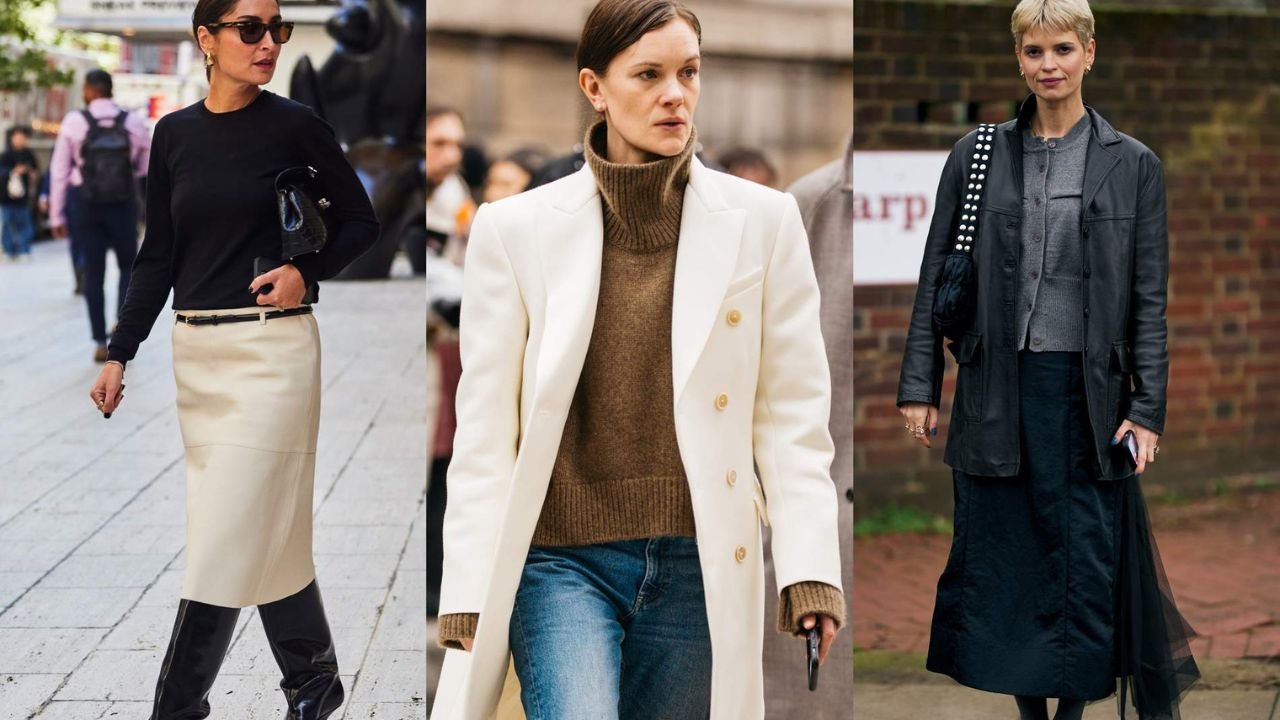Introduction
Cashmere is often regarded as the pinnacle of luxury in the world of fabrics. Its unparalleled softness, warmth, and lightweight nature make it a coveted material among fashion lovers. Whether you’re investing in a classic sweater, a chic scarf, or a versatile coat, understanding how to shop and care for cashmere is essential to maximize your wardrobe’s elegance and longevity.
This comprehensive guide aims to equip you with the knowledge needed to select high-quality cashmere, recognize authentic products, understand different styles, and incorporate these luxurious pieces into your wardrobe with confidence.
1. Understanding Cashmere: The Fabric of Luxury
What Is Cashmere?
Cashmere is a natural fiber obtained from the undercoat of the Cashmere goat, primarily found in regions like Mongolia, Inner Mongolia (China), Iran, Afghanistan, and parts of India and Pakistan. The goats shed their undercoat naturally, which is then collected through combing or shearing.
Why Is Cashmere So Special?
- Softness: Cashmere fibers are finer and softer than sheep wool, making garments incredibly gentle against the skin.
- Insulation: Despite its lightweight feel, cashmere provides excellent warmth due to its fine fibers and natural insulating properties.
- Durability: When properly cared for, high-quality cashmere can last for years, developing a beautiful patina.
The Manufacturing Process
The journey from goat to garment involves:
- Shearing/Combing: Collecting the undercoat.
- Sorting: Separating fine fibers from coarser ones.
- Spinning: Turning fibers into yarn.
- Knitting or Weaving: Creating the fabric, which is then made into clothing.
Types of Cashmere
- Pure Cashmere: 100% cashmere fiber, offering the best softness and quality.
- Cashmere Blends: Usually mixed with silk, wool, or synthetic fibers to enhance durability, elasticity, or affordability.
2. Recognizing High-Quality Cashmere
The Importance of Quality
Not all cashmere is created equal. Poor quality cashmere can pill easily, lose softness, and wear out quickly. As an enthusiast, recognizing quality ensures your investment lasts and maintains its luxurious feel.
Key Indicators of Premium Cashmere
Fiber Fineness (Micron Count)
- Micron Measurement: The diameter of individual fibers measured in microns.
- Optimal Range: 14-16 microns for the finest, softest cashmere.
- Coarser Fibers: Above 19 microns tend to feel rougher and are less luxurious.
Fiber Length
- Longer fibers (35-45 mm) produce smoother, stronger yarns, reducing pilling and increasing durability.
Color and Uniformity
- High-quality cashmere is naturally uniform in color with minimal variations. Dyes should be even, and the fibers should be free of discoloration.
Weight and Density
- The fabric’s weight (grams per square meter) indicates thickness. Lighter cashmere (around 150-200 g/m²) is suitable for layering, while heavier weights (300+ g/m²) provide more warmth.
Knit and Finish
- Finely knit garments with even stitching, smooth seams, and no loose threads reflect craftsmanship.
Pilling Resistance
- High-quality cashmere resists pilling; if you gently rub the fabric and it pills easily, it might be lower quality.
3. Authenticity and Sourcing
How to Verify Authentic Cashmere
- Price Point: Authentic cashmere tends to be expensive due to the labor-intensive process.
- Labels & Certifications: Look for reputable brands with transparent sourcing information. Certifications like “Made in Mongolia” or “Pure Cashmere” are good indicators.
- Feel and Appearance: Genuine cashmere is incredibly soft, lightweight, and has a natural sheen.
- Brand Reputation: Choose established brands known for quality craftsmanship.
Top Regions for Cashmere Production
- Mongolia & Inner Mongolia: Known for the finest fibers, often used in luxury brands.
- Italy & Scotland: Renowned for high-end cashmere manufacturing and craftsmanship.
- China & Iran: Major producers with varying quality; research brands carefully.
Shopping Tips
- Buy from Reputable Retailers: Department stores, luxury boutiques, or specialized cashmere brands.
- Avoid Cheap Imitations: Synthetic or blended fabrics may mimic cashmere but lack the softness and durability.
- Test the Fabric: Gently rub the fabric between your fingers; genuine cashmere feels incredibly soft and warm.
4. Types of Cashmere Clothing & Styles
Classic Cashmere Garments
- Sweaters & Cardigans: The wardrobe staple, available in crew neck, v-neck, turtleneck, or oversized styles.
- Scarves & Shawls: Luxurious accessories that elevate any outfit.
- Dresses & Skirts: Elegant options for formal or casual wear.
- Coats & Jackets: Heavier cashmere-blend coats or full cashmere outerwear provide warmth and sophistication.
- Pants & Loungewear: More contemporary styles now include cashmere joggers and tailored trousers.
Trendy & Modern Styles
- Oversized & Relaxed Fits: Popular for casual chic looks.
- Layered Pieces: Lightweight cashmere turtlenecks under blazers or dresses.
- Colorful & Patterned Designs: While neutral tones are timeless, vibrant hues and patterns are trending.
Seasonal Considerations
- Winter: Heavier knits, coats, and layered pieces.
- Spring & Fall: Lighter sweaters, scarves, and cardigans.
- Summer: Very fine, lightweight cashmere tops or scarves for evening wear.
5. How to Shop for Cashmere Clothing
Setting a Budget
High-quality cashmere can be an investment. Establish your budget based on the piece’s importance and your long-term wardrobe goals. Remember, quality pieces often cost more but last longer.
Choosing the Right Fit and Style
- Personal Style: Classic, minimalist, bohemian, or trendy—select styles that complement your wardrobe.
- Body Shape: Oversized styles work well for taller or curvier figures, while fitted pieces flatter slender frames.
- Versatility: Neutral colors and timeless cuts ensure longevity and ease of pairing.
Shopping Locations
- Luxury Boutiques & Department Stores: Saks, Neiman Marcus, Harrods, or specialized cashmere brands.
- Brand Websites: Direct shopping from brands like Loro Piana, Brunello Cucinelli, or Johnstons of Elgin.
- Specialist Retailers: Stores dedicated to high-quality knitwear or sustainable cashmere brands.
- Vintage & Secondhand Shops: For unique, pre-loved pieces, often at lower prices.
What to Look For
- Label & Material Composition: Ensure 100% cashmere.
- Construction & Finish: Check seams, hems, and overall craftsmanship.
- Feel: The fabric should feel incredibly soft, lightweight, and warm.
- Color & Style: Choose shades and cuts that suit your wardrobe.
6. Caring for Your Cashmere
Proper maintenance extends the life of your investment.
Washing & Drying
- Hand Wash: Use cold water with a gentle detergent formulated for wool or cashmere.
- Machine Wash: If allowed, use a delicate cycle in a mesh bag.
- Dry Flat: Reshape and dry on a flat surface away from direct sunlight or heat sources to prevent stretching and shrinking.
- Avoid Wringing: Gently press out excess water without twisting.
Storage
- Fold, Don’t Hang: Hanging can stretch the fibers.
- Store in Breathable Bags: Use cotton or linen storage bags to prevent moth damage.
- Use Cedar Blocks or Mothballs: Protect against pests.
Pilling & Maintenance
- Remove Pills Gently: Use a cashmere comb or fabric shaver.
- Regular Light Cleaning: Prevent excessive piling and maintain softness.
7. Styling Tips for Cashmere
- Layer Up: Combine cashmere sweaters with blouses or turtlenecks for warmth and style.
- Mix Textures: Pair cashmere with silk, leather, or denim for contrast.
- Accessorize: Cashmere scarves, hats, or gloves add sophistication.
- Color Coordination: Neutral shades are versatile; bold colors make statement pieces.
- Dress It Up or Down: From casual jeans to tailored trousers or evening wear.
8. Sustainable & Ethical Shopping
Increasingly, consumers seek eco-friendly options.
- Look for Sustainable Brands: Brands committed to ethical sourcing, fair labor, and eco-conscious production.
- Check Certifications: Responsible Wool Standard (RWS), Fair Trade, or organic certifications.
- Buy Less, Choose Well: Investing in fewer, high-quality pieces reduces waste and promotes sustainability.
Conclusion
Shopping for cashmere clothing is both an art and a science. As a fashion enthusiast, your goal is to select pieces that embody luxury, craftsmanship, and timeless style. By understanding the nuances of quality, sourcing, and care, you can build a wardrobe of enduring, elegant cashmere that elevates your personal style.
Remember, investing in high-quality cashmere is an investment in yourself—a way to indulge in luxury, comfort, and sophistication every day. Happy shopping!

